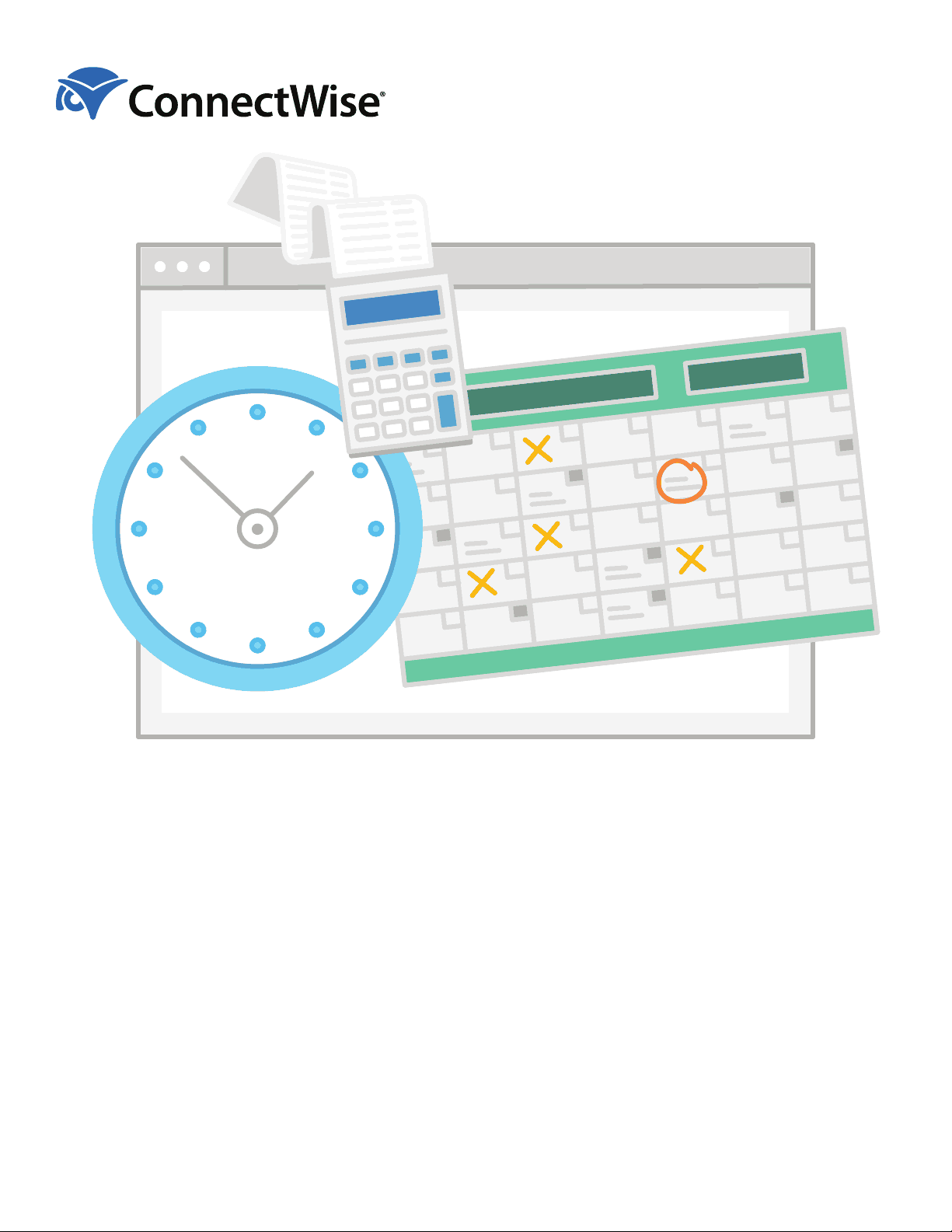
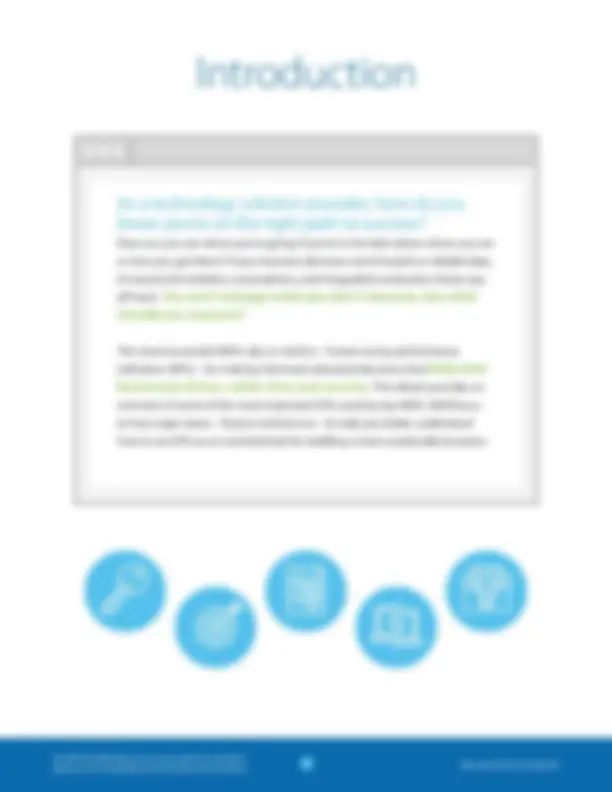
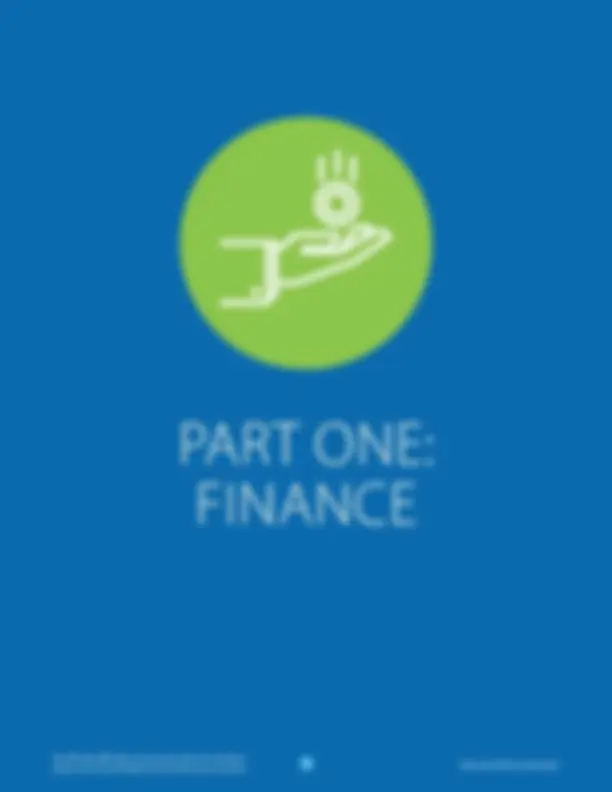
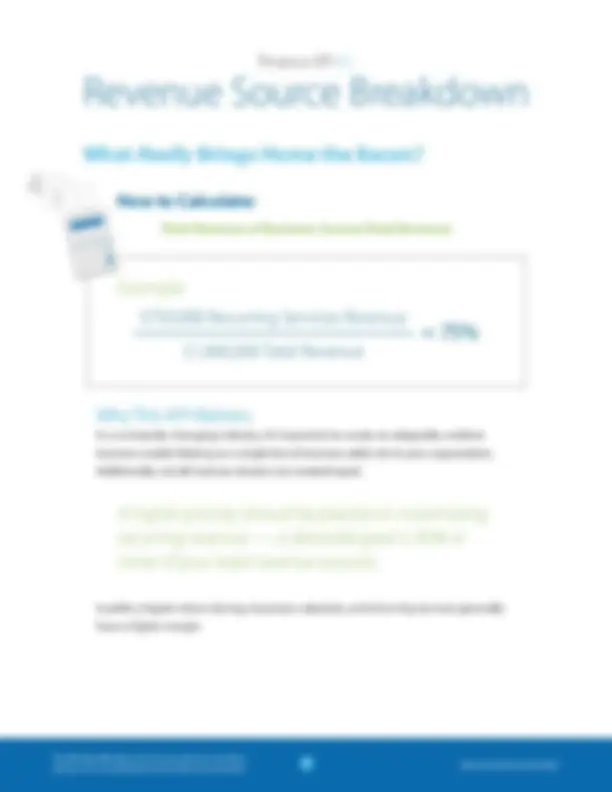
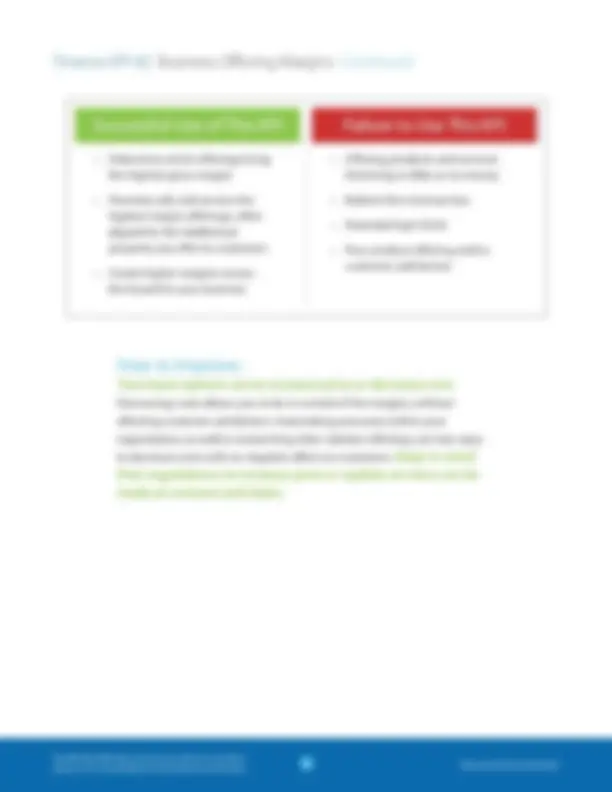
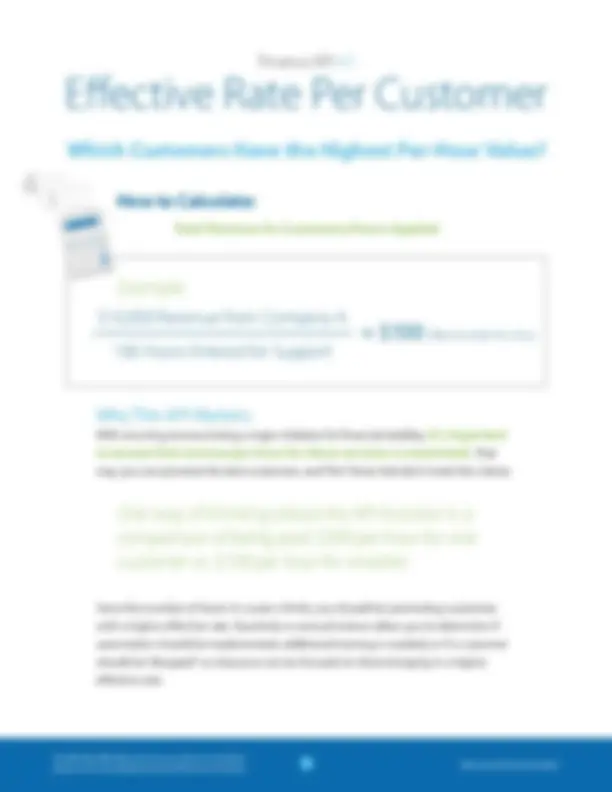
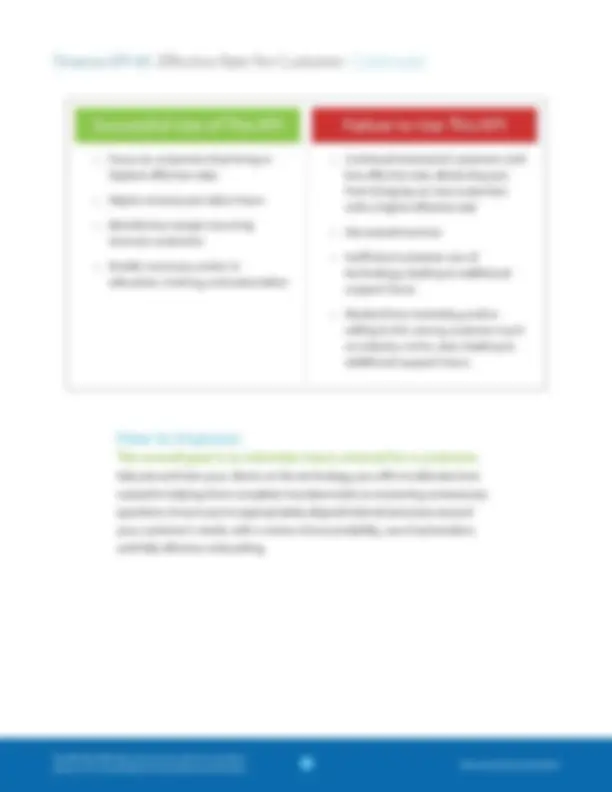
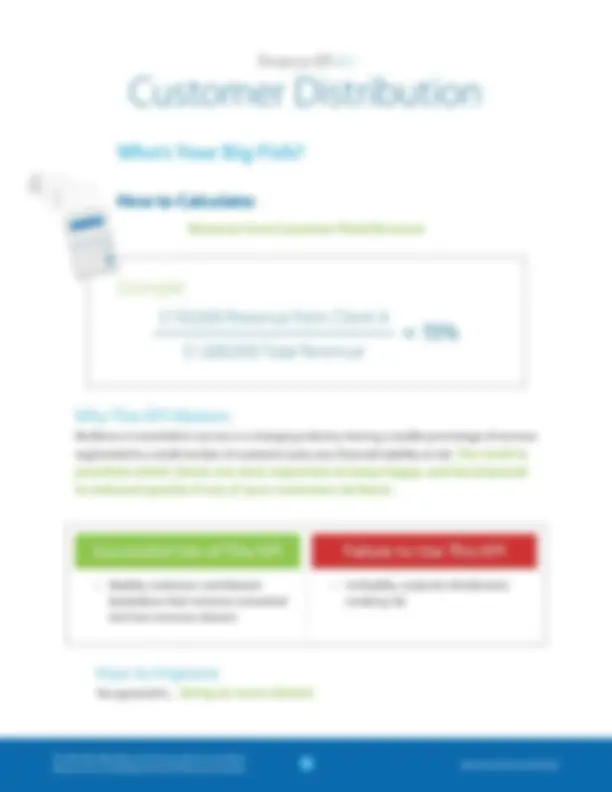
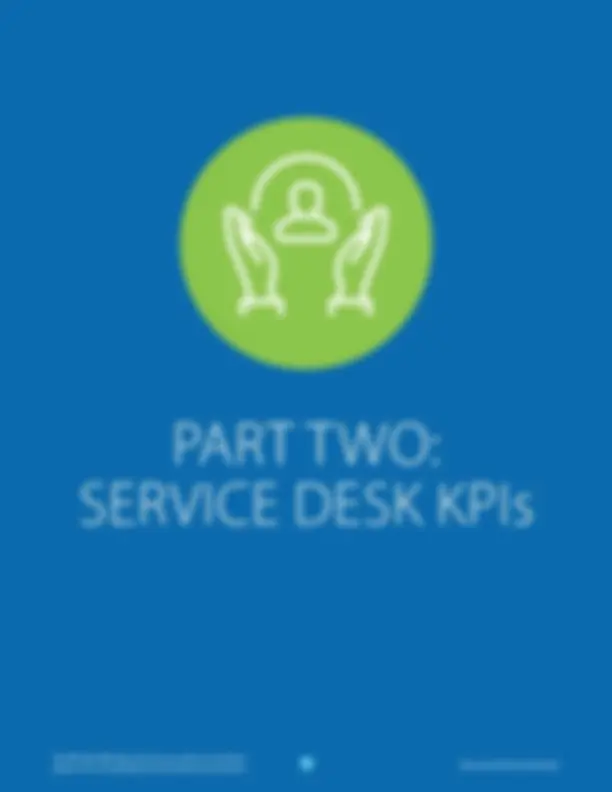
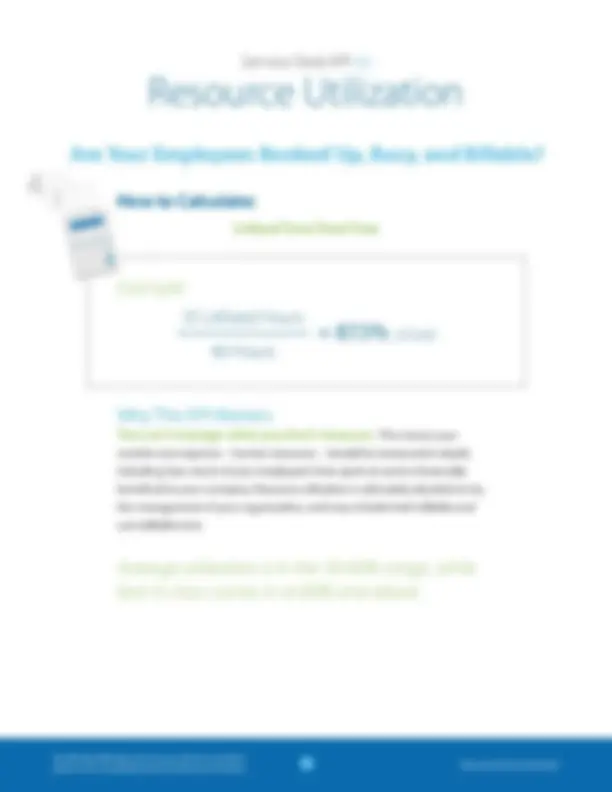
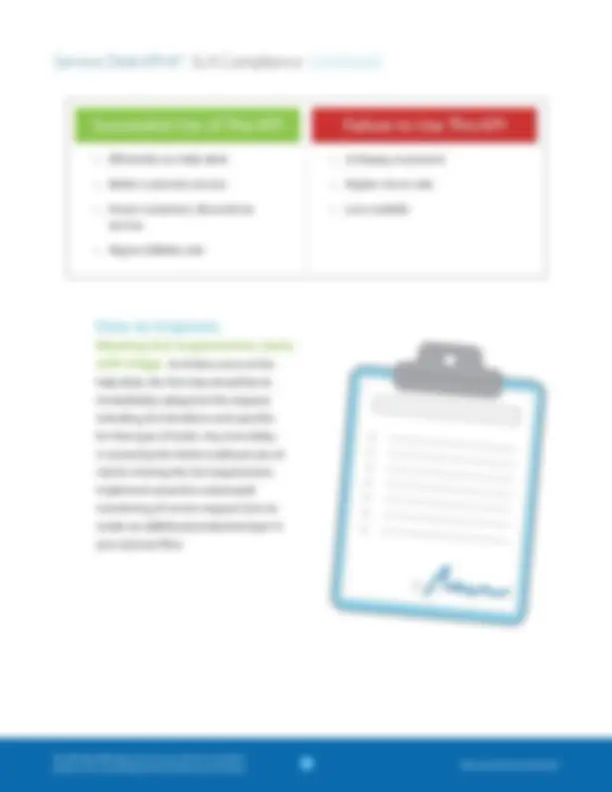
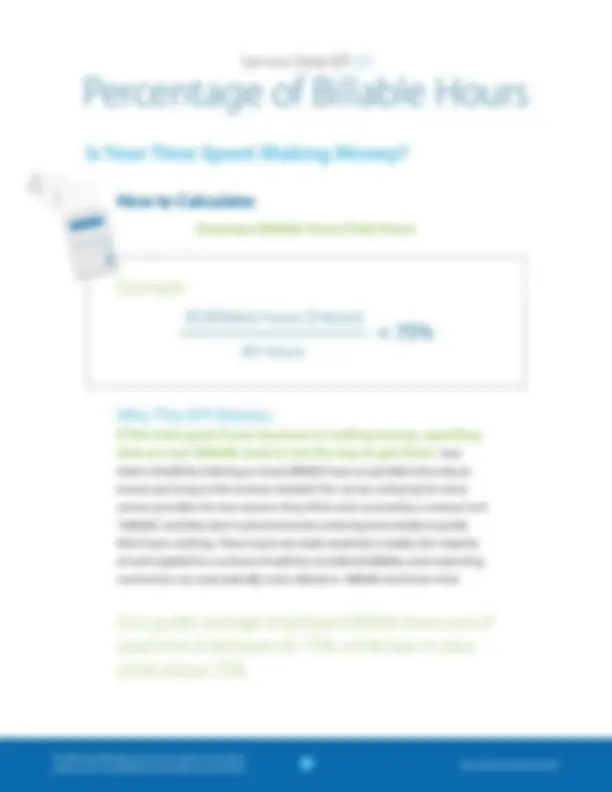
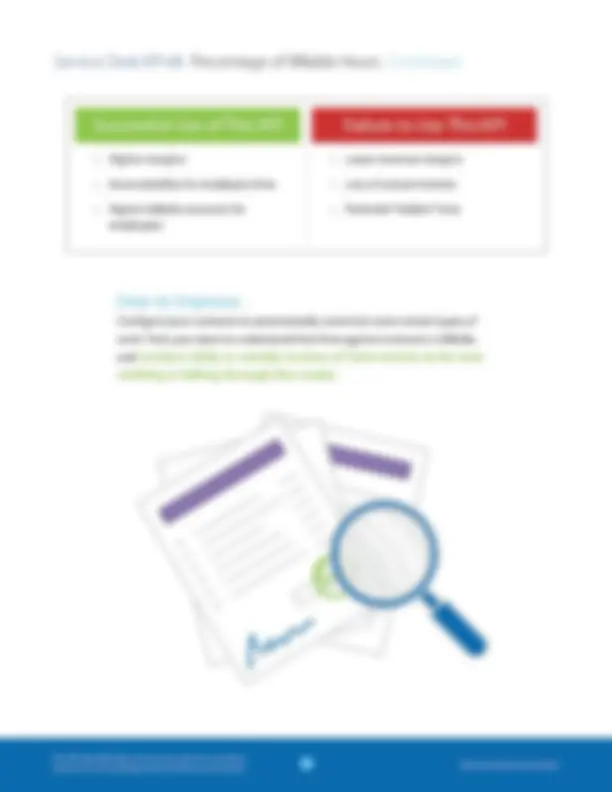
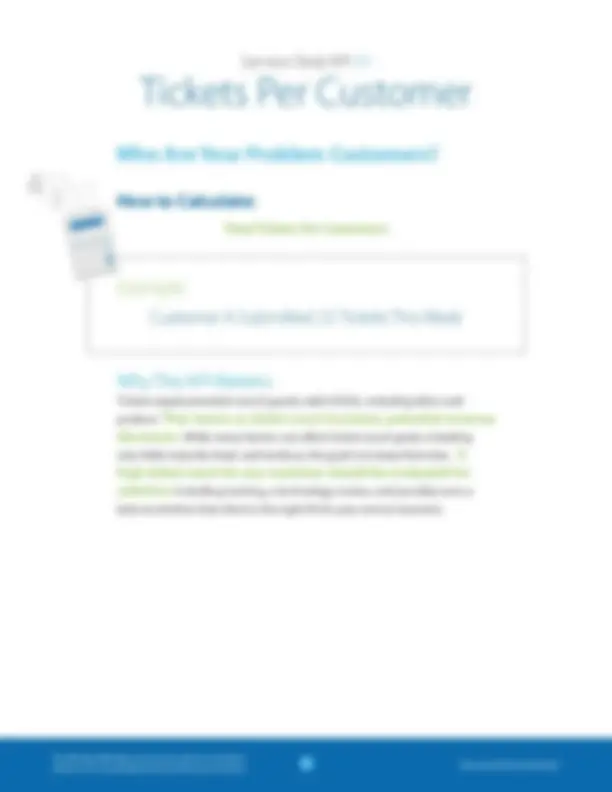
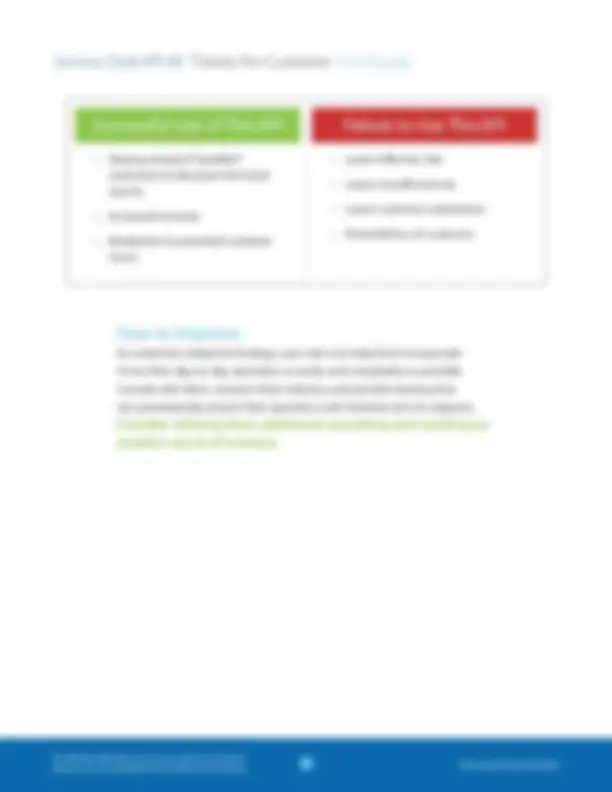
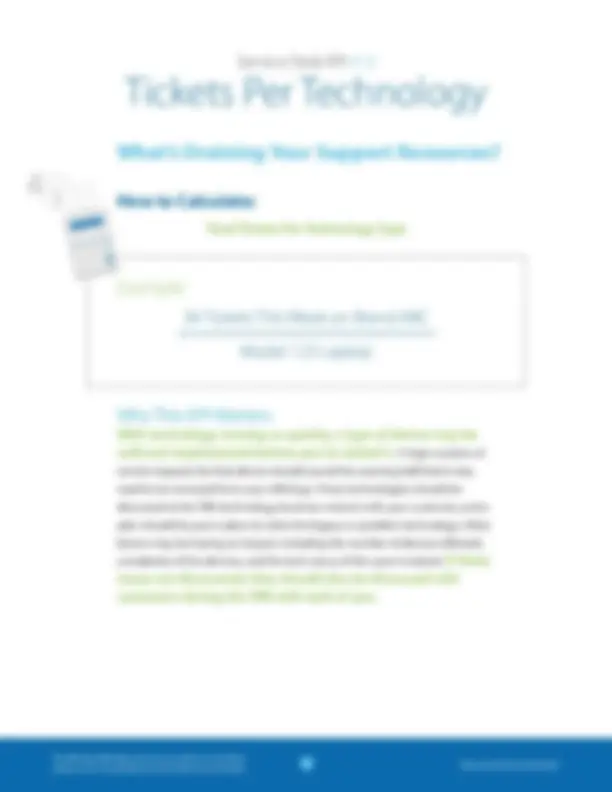
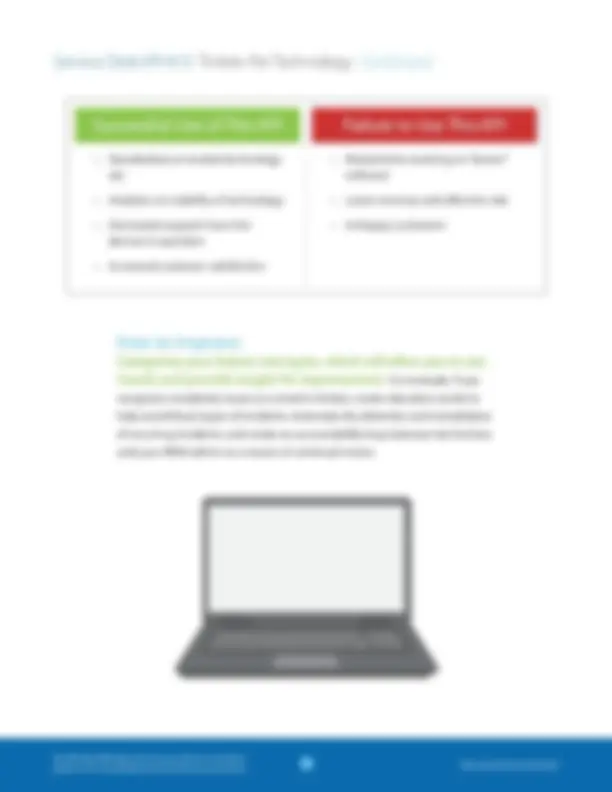
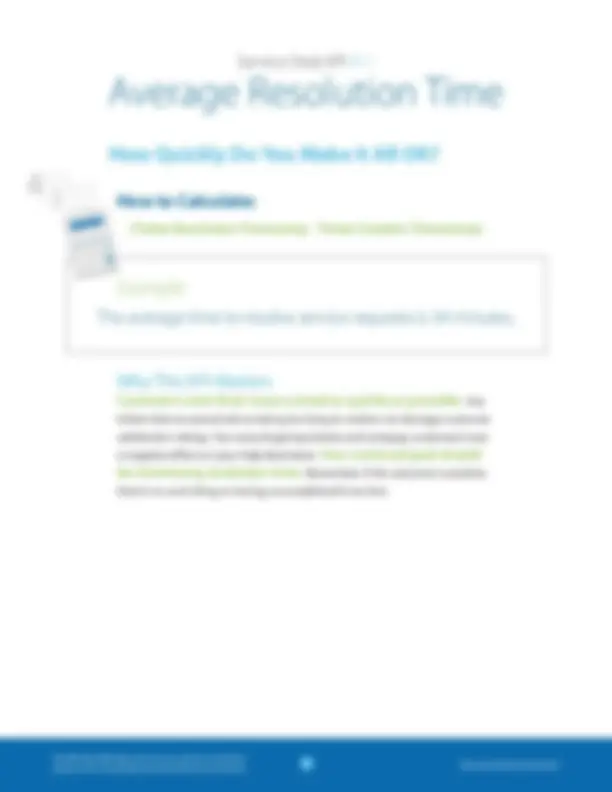
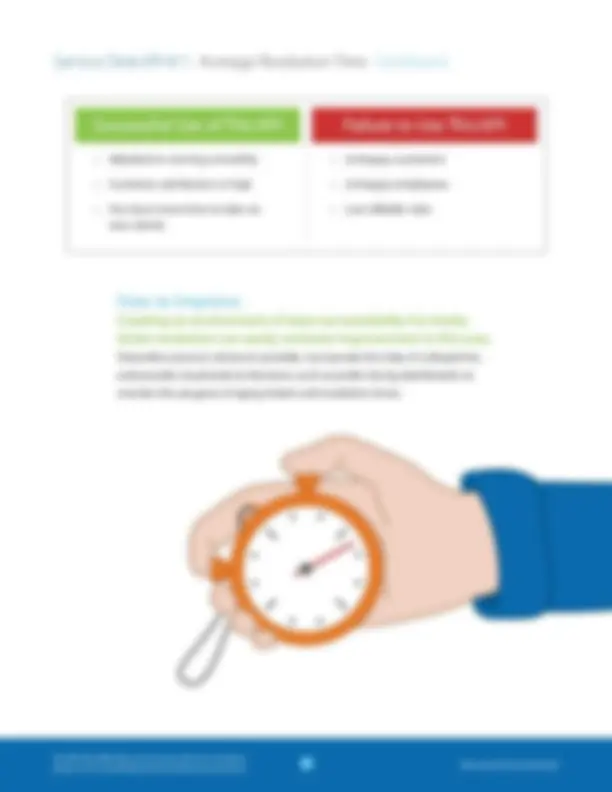
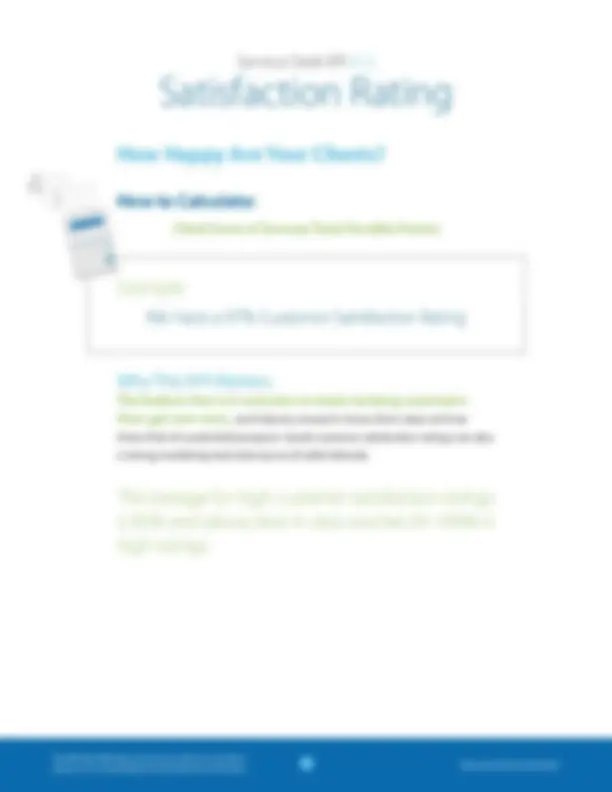
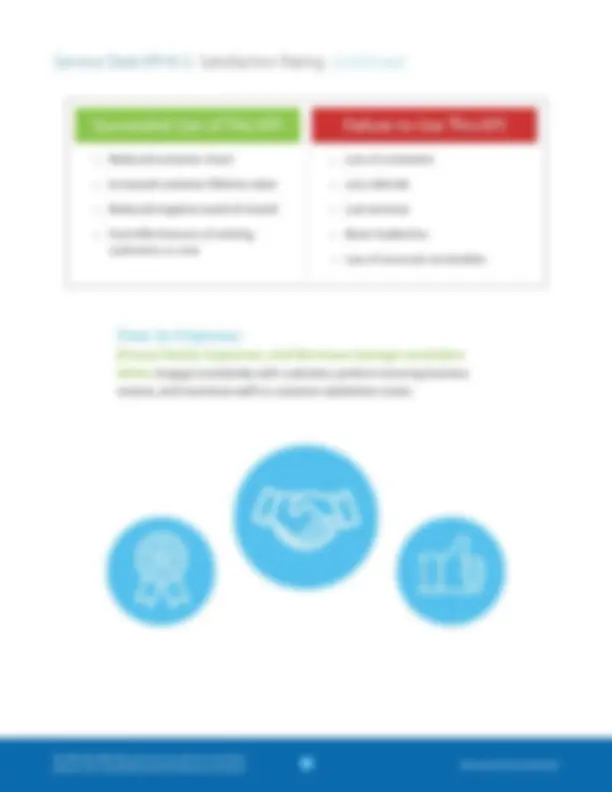
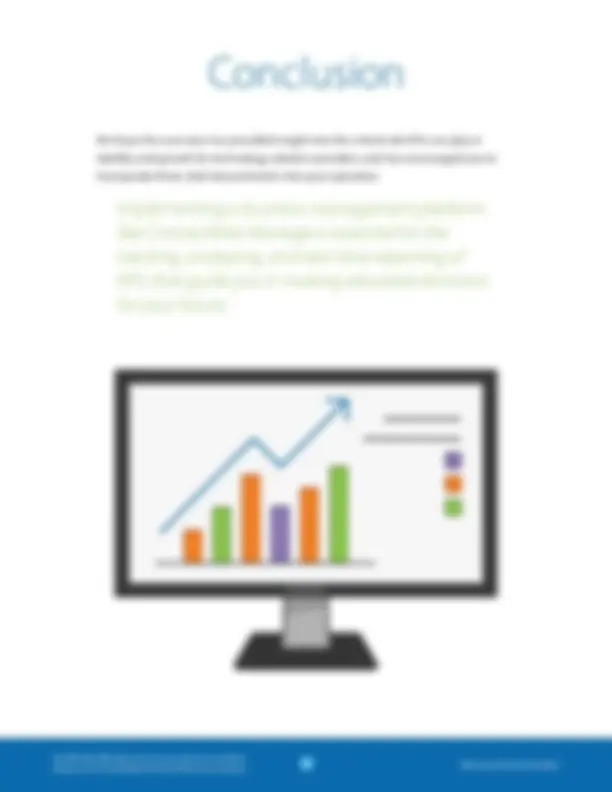
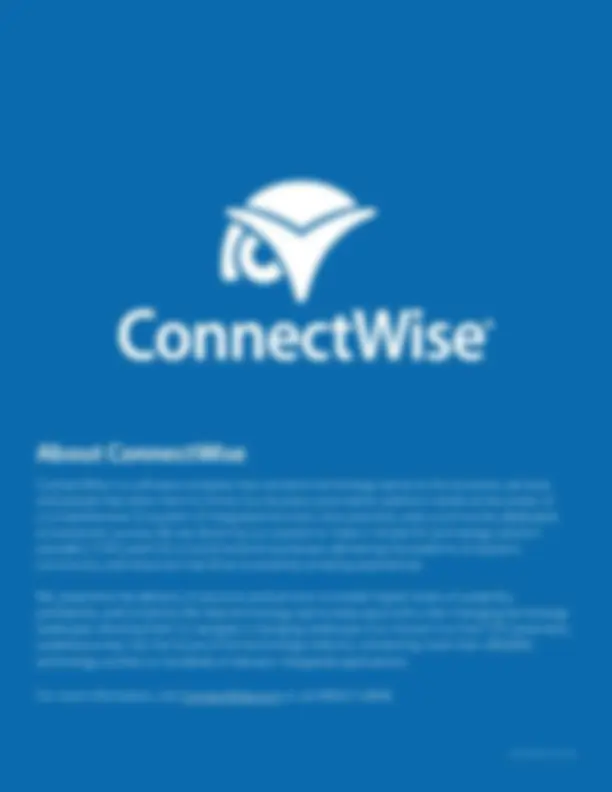


Study with the several resources on Docsity

Earn points by helping other students or get them with a premium plan


Prepare for your exams
Study with the several resources on Docsity

Earn points to download
Earn points by helping other students or get them with a premium plan
Community
Ask the community for help and clear up your study doubts
Discover the best universities in your country according to Docsity users
Free resources
Download our free guides on studying techniques, anxiety management strategies, and thesis advice from Docsity tutors
Guidelines for how to manage your MSP business
Typology: Study Guides, Projects, Research
1 / 30

This page cannot be seen from the preview
Don't miss anything!























ConnectWise eBook Series
Key Performance Indicators The KPIs Top MSPs Rely on for Success & How to Use Them in Your Business
The KPIs Top MSPs Rely on for Success & How to Use Them Measure Your Sustainability with Key Performance Indicators 2 800.671.6898^ |^ ConnectWise.com Contents
Part Two: Service Desk KPIs Part One: Finance KPIs
8 11 7 10 6 9 12 4 5 1 2 3
What Really Brings Home the Bacon? How to Calculate:
Revenue Source Breakdown Finance KPI # Example: $750,000 Recurring Services Revenue $1,000,000 Total Revenue = 75% Why This KPI Matters In a constantly-changing industry, it’s important to create an adaptable, resilient business model. Relying on a single line of business adds risk to your organization. Additionally, not all revenue streams are created equal. A higher priority should be placed on maximizing recurring revenue — a desirable goal is 50% or more of your total revenue sources. It yields a higher return during a business valuation, and recurring services generally have a higher margin.
Example: ($500,000 Revenue from “Silver Package” - $250,000 cost) $500, = 50% Does This Service Make Money? How to Calculate:
Business Offering Margins Finance KPI # Why This KPI Matters
sell to both your new and existing customers, allowing you to maximize the sale of marginally beneficial items. As a reference, professional services should strive for 30% or more margin, while managed services should set 40% plus as a goal, with intellectual property aiming at over 50%.
Finance KPI #2 Business Offering Margins Continued How to Improve:
Decreasing costs allows you to be in control of the margins, without affecting customer satisfaction. Automating processes within your organization, as well as researching other solution offerings, are two ways
Successful Use of This KPI
Finance KPI #3 Effective Rate Per Customer Continued How to Improve:
Educate and train your clients on the technology you offer to alleviate time wasted in helping them complete mundane tasks or answering unnecessary questions. Ensure you’ve appropriately aligned internal processes around your customer’s needs, with a review of accountability, use of automation, and fully effective onboarding. Successful Use of This KPI
Example: $400,000 Total Revenue from “Silver” Offering 5,000 Hours Applied = 80% Effective Rate Where Should I Invest My Time? How to Calculate:
Why This KPI Matters This indicator can reveal the effectiveness of product development, and lead to better product management. Service offerings are often initially
can make fact-based decisions about which service offerings to prioritize, provide, or even remove from your catalogue. Effective Rate Per Offering Finance KPI #
Example: $150,000 Revenue from Client A $1,000,000 Total Revenue = 15% Who’s Your Big Fish? How to Calculate:
Customer Distribution Finance KPI # Why This KPI Matters Resilience is essential to success in a changing industry. Having a sizable percentage of revenue
How to Improve:
Successful Use of This KPI
Service Desk KPI #6 Resource Utilization Continued How to Improve:
Successful Use of This KPI
Example: 75 Tickets Met SLA 100 Total Tickets = 75% SLA Compliance Service Desk KPI # Why This KPI Matters Service Level Agreements (SLA) define a standard of performance, which sets up appropriate expectations for your customers and your help desk team. They can also reveal a need for improvement in internal processes and tools. SLA compliance is key to customer satisfaction; businesses want to deal with minimum downtime – and that means they are often willing to pay a higher rate for better SLA times. Average rate for number of service requests that met SLA is 80% or more; best in class is an impressive 99.999%. Are You Meeting Customer Expectations? How to Calculate:
Example: 30 Billable Hours Entered 40 Hours = 75% Is Your Time Spent Making Money? How to Calculate:
Percentage of Billable Hours Service Desk KPI # Why This KPI Matters
teams should be entering as many billable hours as possible every day to ensure you bring in the revenue needed. This can be confusing for some service providers for two reasons: they think work covered by a contract isn’t “billable”, and they don’t want technicians entering time simply to justify their hours working. These issues are easily resolved: in reality, the majority of work applied to a contract should be considered billable, and a reporting mechanism can automatically track utilized vs. billable technician time. As a guide, average employee billable hours out of total time is between 65-75%, while best in class ranks above 75%.
Service Desk KPI #8 Percentage of Billable Hours Continued How to Improve: Configure your contracts to automatically cover/not cover certain types of work. Train your team to understand that time against contracts is billable,
Successful Use of This KPI